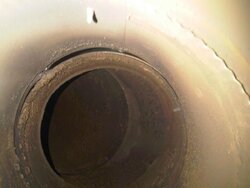hughmyster said:RenovationGeorge said:hughmyster said:RenovationGeorge said:hughmyster said:I got a cleaning service coming out. Stove is still backpuffing. Im thinking maybe too much creosote buildup in chimney slowing down draft causing backpuffing? Any ideas? When i first got this stove i never had a problem for the first year and a half. Does the type of wood make a difference? Is there such thing as too dry wood?
Hi HM,
What stove, chimney, etc?
Would you put it in your signature ("Your Control Panel" up above)
44 elite. Air insulated chimney 30 ft. The stove had the option of posi pressure but i did the interior option. I have been trying to figure out why the it has been acting this way. I built this house 3 years ago and the problem is getting progresively worse. Its having those explosions when the air is all the way down and cat ingaged. the smoke exits the door seals and smells up the house.
I put a new cat in. It improved it a little but not enough.Im almost thinking negative pressure? Stack effect?
Has it been a year and a half since you had your chimney inspected and cleaned? If so, I'd certainly start there. Otherwise we can discuss other possibilities.
I never had it cleaned. I was told the cat stoves burn clean so they dont need cleaning.
Nossir, you were told wrong.
You should have it inspected at least once a year, and cleaned as needed. Your chimney is unsafe. It could be full of creosote, and at risk of a dangerous chimney fire.
That's the right place to start--it may fix your other problems.


